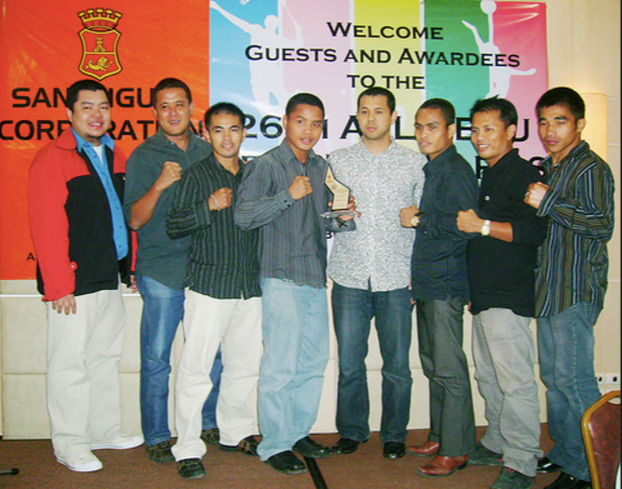Of the three sons of Antonio and Lou Aldeguer, it’s the middle child Michael who took after his dad in pursuing a life that’s dedicated to sports.
As president of ALA Promotions, Michael has been an aggressor. If he were a boxer, he’s not a counterpuncher but one who’s offense-minded, always moving forward, jabbing and attacking. To date, ALA Promotions is now on its 39th edition of the Pinoy Pride series.
I’ve known Michael since we were in high school. He studied in Sacred Heart and I dribbled as CIS point guard and we faced each other many times on the parquet floor. As the year ended last week, I asked Michael to revisit 2016 and to look forward to 2017 (Part 2 will appear on Sunday).
“The year 2016 was a successful year for ALA Promotions,” said Michael. “We partnered with the biggest promoters in the industry, Top Rank and Mexico’s Zanfer, and worked with a new sponsor, Tecate.”
While tracing its roots in Cebu and contuining their tradition of holding promotions at home (in April, it was an overflowing crowd at the Cebu City Sports Center and, last Nov., at the Cebu Coliseum), the ALA brand has gone international. Michael is proudest of the impact the fighters have accomplished in America.
“We staged more shows that our fellow Filipinos, especially those abroad, could be proud of,” he said, citing the partnership with TV giant ABS-CBN and TFC (including their top-rated Sunday show) as essential to the growth of Phil. boxing.
I asked Michael about his appraisal of the ALA fighters.
“In boxing, it’s always difficult to assess a fighter,” he said. “Evaluating the opponent’s caliber is just as important as looking at each fight’s outcome.”
That’s true. In any sport, it’s easy to look good when your opponent is weak; but when you’re up against the best in the world, the scorecard changes.
The best example is Albert Pagara. Prior to fighting Cesar Juarez, the WBO #1, he was undefeated in 26 fights and could have continued this no-loss streak by taking the easier route.
“He could have fought a lower level opponent but you will never know if a fighter is ready or not until they are tested,” said Michael, of Pagara’s 8th round KO loss in California last July. “It was a good performance for Albert but he got hit. It’s all part of a learning process, to see if a fighter can come back after a knock out loss.”
The ALA boxing gym has dozens of fighters. Michael talked about two of the most promising.
Jeo Santisima, only 20, hails from Masbate. He entered the ring four times in 2016 and knocked-out every one of this opponents, including former Phil. super bantamweight champ Jerry Nardo and former Phil. superfly and bantamweight champ Marco Demecillo.
“Santisima concluded this year’s performance with yet another sensational win over multi-international champion Rex Wao last Nov. in Pinoy Pride 39,” said Michael.
“Santino” is his nickname and Michael says that he has shown two of the most important factors in becoming a star and a world champion — “great power and heart” — and believes Santisima is one of the hardest punchers in Philippine boxing today.
He also cited the undefeated WBO International Featherweight champ Mark “Magnifico” Magsayo. Against veteran and world title challenger Chris “The Hitman” Avalos last April at the CCSC, the 21-year-old from Bohol wowed the 25,000 fans in attendance.
“Magsayo’s performance this year secured him the No. 1 spot in Mark Butcher’s ‘Five rising Asia stars of boxing to watch in 2017,’ released online via Asia Times,” said Michael. “Butcher called the fight a ‘bona fide Fight of The Year contender’ and stated that Magsayo ‘gatecrashed the world rankings with that stirring victory and illustrated he has the heart and spirit to overcome adversity.’”
Santino and Magnifico will have a busy 2017, said Michael, adding, “We will build them up and will work with different fighters from other stables all over the Philippines and abroad to support the steadfast growth of Philippine boxing.”

